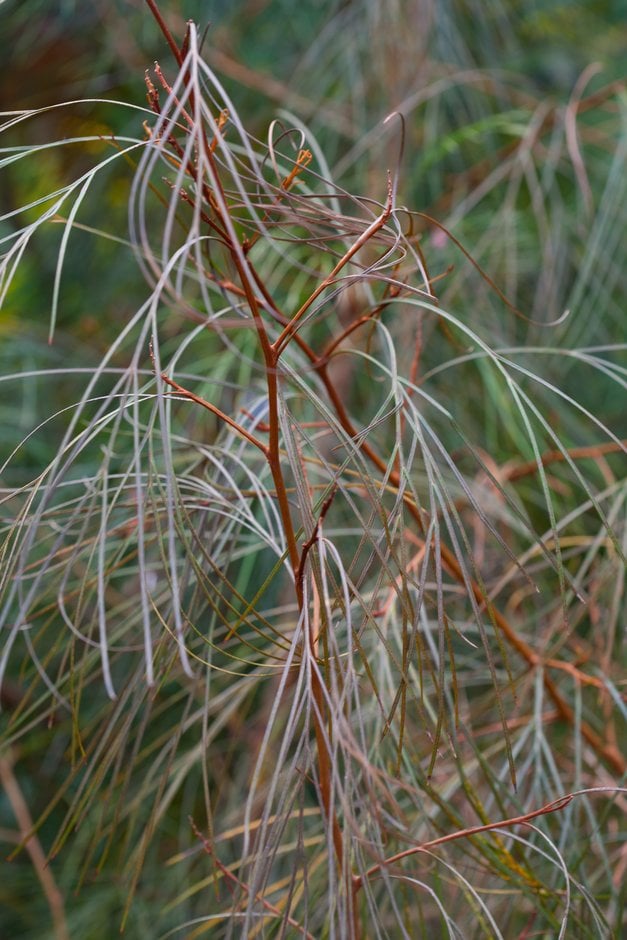Size
Ultimate height
1.5–2.5 metresTime to ultimate height
10–20 yearsUltimate spread
1.5–2.5 metresGrowing conditions
Moisture
Well–drainedpH
Acid, NeutralColour & scent
| Stem | Flower | Foliage | Fruit | |
| Spring | Green | |||
|---|---|---|---|---|
| Summer | Pink Red | Green | ||
| Autumn | Green | |||
| Winter | Green |
Position
- Full sun
Aspect
West–facing or South–facing
Exposure
Sheltered Hardiness
H3Botanical details
- Family
- Proteaceae
- Native to GB / Ireland
- No
- Foliage
- Evergreen
- Habit
- Bushy
- Potentially harmful
- Skin irritant/allergen. Wear gloves and other protective equipment when handling Pets: Skin irritant/allergen. For further information and contact numbers regarding pets, see the HTA guide to potentially harmful plants
- Genus
Grevillea can be evergreen shrubs or trees, with alternate, simple or pinnately divided leaves and petal-less flowers consisting of a colourful calyx tube with protruding style, borne in racemes or panicles
- Name status
Correct
- Plant range
- E Australia
How to grow
Cultivation
Grow outdoors in very mild areas in acid to neutral, well-drained soil. Grow under glass in lime-free compost with added grit in full light and apply low phosphate, liquid fertiliser monthly when in growth
Propagation
Propagate by semi-hardwood cuttings
Suggested planting locations and garden types
- Coastal
- City and courtyard gardens
- Mediterranean climate plants
- Wall side borders
- Flower borders and beds
Pruning
Pruning group 1 outdoors, but more rigorous pruning may be necessary indoors to restrict size
Pests
Generally pest-free
Diseases
May be susceptible to honey fungus (rarely)
Get involved
The Royal Horticultural Society is the UK’s leading gardening charity. We aim to enrich everyone’s life through plants, and make the UK a greener and more beautiful place.
